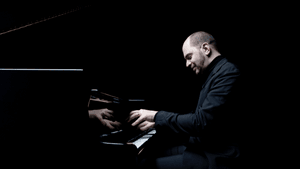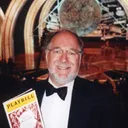Stay in the Loop
BSR publishes on a weekly schedule, with an email newsletter every Wednesday and Thursday morning. There’s no paywall, and subscribing is always free.
The Tchaikovsky concerto that wasn't
The trouble with Tchaikovsky's Piano Concerto No. 1 in B-flat minor

The best known of all piano concertos is fraudulent. It has been for more than a century.
Have you heard?
The thundering octave chords that introduce Tchaikovsky’s Concerto No. 1 in B-flat minor are so compelling that they were used for the song “Tonight We Love,” which was one of the best-selling pop records of the 1940s.
In addition, classical pianists from Vladimir Horowitz to Lang Lang pounded out those sonorous chords in concert halls. Van Cliburn’s recording of the concerto, made after his victory at the first International Tchaikovsky Competition in Moscow at the height of the Cold War, became the first classical album to go triple platinum, and the first LP that many classical music lovers owned.
For many, the concerto is the sound of classical music.
The introduction of the concerto was played at the closing ceremony of the 2014 Winter Olympics in Sochi, Russia. The opening bars were played in a Monty Python's Flying Circus sketch in which a pianist struggled, like Harry Houdini, to escape from a locked bag. And a disco rendition of the concerto was used to open the finale of The David Letterman Show.
Philadelphia took freedoms
Trouble is, those chords were not written by Tchaikovsky. And they were not played when Tchaikovsky conducted his concerto at the Academy of Music in Philadelphia on May 18, 1891, at the end of his only visit to America.
What the soloist, Adele aus der Ohe, played, and the composer conducted, was distinctly different music. After Tchaikovsky’s death in 1893, a new published edition contained unauthorized alterations and it was accepted by classical pianists from then on. It transposed the opening notes an octave higher than what the composer wrote, and substituted solid chords (that is, three notes played simultaneously) instead of the rolling arpeggios in the original. The opening that Tchaikovsky wrote was more lyrical, less bombastic. This hummable, most-familiar part of the piece has a soft Schumannesque character in Tchaikovsky’s original concept rather than the more-emphatic version that the public knows.
Through the years, musicians did note that the introduction's theme seemed to be separate and independent from the rest of the concerto. Russian music historian Francis Maes wrote “for a long time, the introduction posed an enigma to analysts and critics alike.”
The bogus version also changed a middle section from an Allegro vivace assai (“at a lively walking pace”) into a fast prestissimo which sounds almost like cartoon music. Then, in the last movement, sections were cut that introduced harmonically and contrapuntally adventurous combinations of sounds. The posthumous edition took a shortcut that eliminated this.
The final minute of the piece was originally lyrical, and was altered to become a triumphal proclamation played fortissimo by the orchestra and piano together. The final cadenza in the posthumous version has a pompous fermata, or hold, before the final restatement of the melody. What Tchaikovsky actually wrote was a slow trill that flows into the final statement of the melody.
These are not just scholarly fine points; they are substantial changes in key parts of the concerto, altering its entire character.
Against his wishes
Tchaikovsky was firm about his wishes. In a letter to his patron Nadezhda von Meck, he wrote that the pianist Nikolai Rubinstein asked him to re-work certain passages, but “I shall not alter a single note. I shall publish the work exactly as it is! This I did.” He went on to assert, “I am no longer a boy trying his hand at composition, and I no longer need lessons from anyone.”
Thus it was a desecration for anyone to change what the composer wrote. Yet that’s what the musical world has done since the composer’s unexpected death at the age of 53.
For the 140th anniversary of the concerto’s premiere, the State Institute of Art Studies at the Tchaikovsky Museum and Archive in Klin, Russia, published a new scholarly edition of the concerto based on the composer’s own conducting score from his last public concert, with handwritten performance markings.
Kirill Gerstein’s world premiere recording of the concerto enables us to hear the authentic version for the first time. It has been nominated by BBC Music Magazine as "Best Concerto Recording" of 2016. Gerstein also wrote in his liner notes, “I find the editorial changes add a superficial brilliance to the piece, while at the same time detracting from its genuine musical character. His own version shows a strong lyrical and noble vein that the better-known posthumous version negates.”
Any notion that Tchaikovsky might have authorized the posthumous version is contradicted by the fact that we now can see the score he conducted right before his death. His softer version is heard on this new recording.
Gerstein’s performance makes an overwhelmingly convincing case for returning to the author’s text, to forget what overzealous editors put in. Yet, oddly, at the most recent Tchaikovsky competition in Moscow pianists performed the now-discredited version. Perhaps someone ought to send Gerstein's recording to Russia, with love.
For an account of Tchaikovsky's 1891 visit to Philadelphia, click here.
What, When, Where
Tchaikovsky and Prokofiev: Piano Concertos. Kirill Gerstein, piano. Myrios Recordings, 2015; $18.99, available at amazon.com.
Sign up for our newsletter
All of the week's new articles, all in one place. Sign up for the free weekly BSR newsletters, and don't miss a conversation.
 Steve Cohen
Steve Cohen